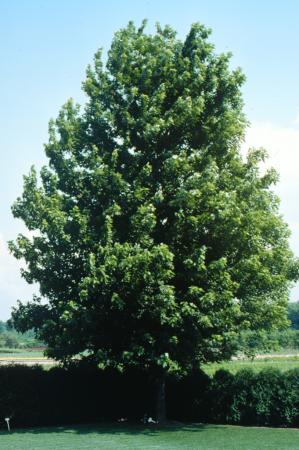CLC Tree Services has shared information about soil over the last little while in the hopes that homeowners will better understand their soil and its relation to their trees. Soil texture, pH levels and interdependence on water all affect not only the health of your existing trees, but should also be taken into consideration when planting new trees.
We’ve provided generalized information so far, but today we want to get specific. What do we have to deal with in London, Ontario? What kind of soil is most common in London and what trees do best in that soil and in our climate? Choosing the most appropriate trees for your location is always key in giving a newly planted tree the best chance at surviving and thriving.
London at a Glance
London covers about 420 square kilometres. We receive approximately 1000 mm of precipitation each year, in the form of snow in winter and rain throughout. Weather fluctuates between hot, humid summers and cold, snowy winters, with temperatures ranging from average lows of -10°C in winter to average highs of 26°C in summer. Residents of the Forest City experience frequent thunderstorms and snow squalls due to our proximity to the surrounding Great Lakes.
As far as the geography of London goes, this area was formed during the last ice age when glaciers retreated. It left behind some of the most productive agricultural lands would could ask for. While soil may differ from one pocket of the city to another, the most common makeup holds high calcium, with pH levels that hover around 7.0 – 8.3. Soil texture varies depending upon location. Byron has predominantly sand with a CEC of 10 – 14. Old South and Old North have mostly clay soil with CEC levels of around 20.
CEC (Cation Exchange Capacity): Cation exchange capacity (CEC) is a measure of the soil’s ability to hold positively charged ions. It is a very important soil property influencing soil structure stability, nutrient availability, soil pH and the soil’s reaction to fertilisers and other ameliorants (Hazleton and Murphy 2007) – Definition from Soilquality.org.au
For a more indepth look at CEC and its importance to soil, A&L Canada Laboratories has a thorough Fact Sheet discussing cations and plant nutrition. If you are still confused, our resident Plant Health Care expert Pamela Cook would be happy to talk soil with you. She is also a great source for knowing which trees to plant where. Which is why I looked to her for the big question you all have—what tree should I plant?
Recommended Trees to Plant in London
CLC Tree Services knows our trees. Ideally, we like to see healthy trees thriving in the best conditions for them. Which is why we suggest certain trees to plant in London, Ontario over others.
Pam says, “because of high pH levels, there are a good chunk of trees that go chlorotic from locked up iron, like native red maples and white pines. They do better in a 6.0 – 7.0.”
Chlorosis – iron chlorosis is a yellowing of plant leaves caused by iron deficiency, usually in high pH soils (pH above 7.0)
“For larger trees I always lean towards x freemanii maples, that are a natural cross of red and silver. They are highly drought and pH tolerant and thrive in a wide variety of soils”
“Sugar maples are great. Oaks in the right location are lovely, but can suffer in lean soils. Tulip trees are a crowd favourite at CLC, and right up there is the Ginkgo.”
How about those looking for medium sized trees?

A Group of Katsura trees in the Fall. Photo by Shoata K. Katsura trees are pest resistant, drought tolerant, and tolerate a wide range of pH levels.
“Hedge maples, serviceberries, and redbud trees are all great choices. Beech is an option, though they have very specific sites they do better in. Katsura is a huge fan fav for CLC in almost all sites,” Pam suggests.
“And we can’t forget Dawn Redwoods,” she adds.
Not all trees work in all locations though.
“For hard conditions, where it needs a tough tree (not our go to trees, but these are as tough as nails), try linden, honey locust, silver maple, or hedge maples.”

A 16′ Northern Hemlock was the perfect choice of tree to plant for a homeowner who lost trees to fungi
“For those looking for evergreens, we suggest hemlocks for shade and Norway spruce for larger sites (hardy to most disease and fungi). Silver fir are tolerant/resistant to common fungi and bacterial issues. White pine is another great option.”
While Pam could add many more trees to the list of great trees to plant in London, there are a few more worth noting. “Some other under-utilized trees include; blue beech, tupelo (known also as a black gum), Amur maple, Persian parrotia, Japanese snowbell, Japanese stewartia, elm (back on the rise), and paper bark maple.”
If there is another tree you are considering, but not sure if it is the best choice for your site, feel free to contact CLC Tree Services with your questions. We are always happy to help!




You must be logged in to post a comment.